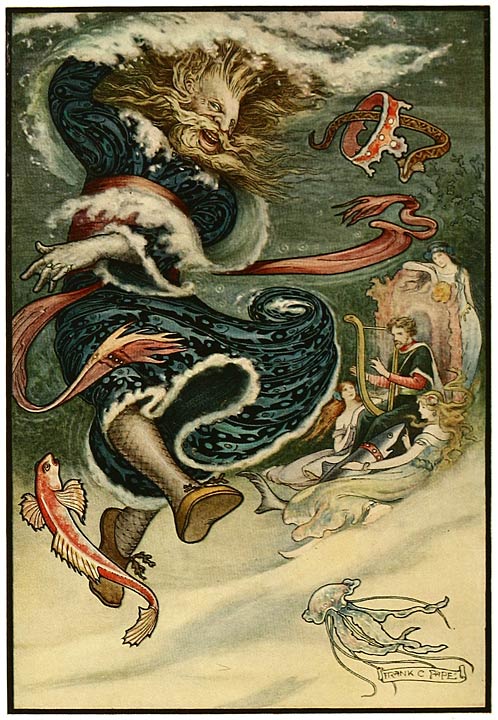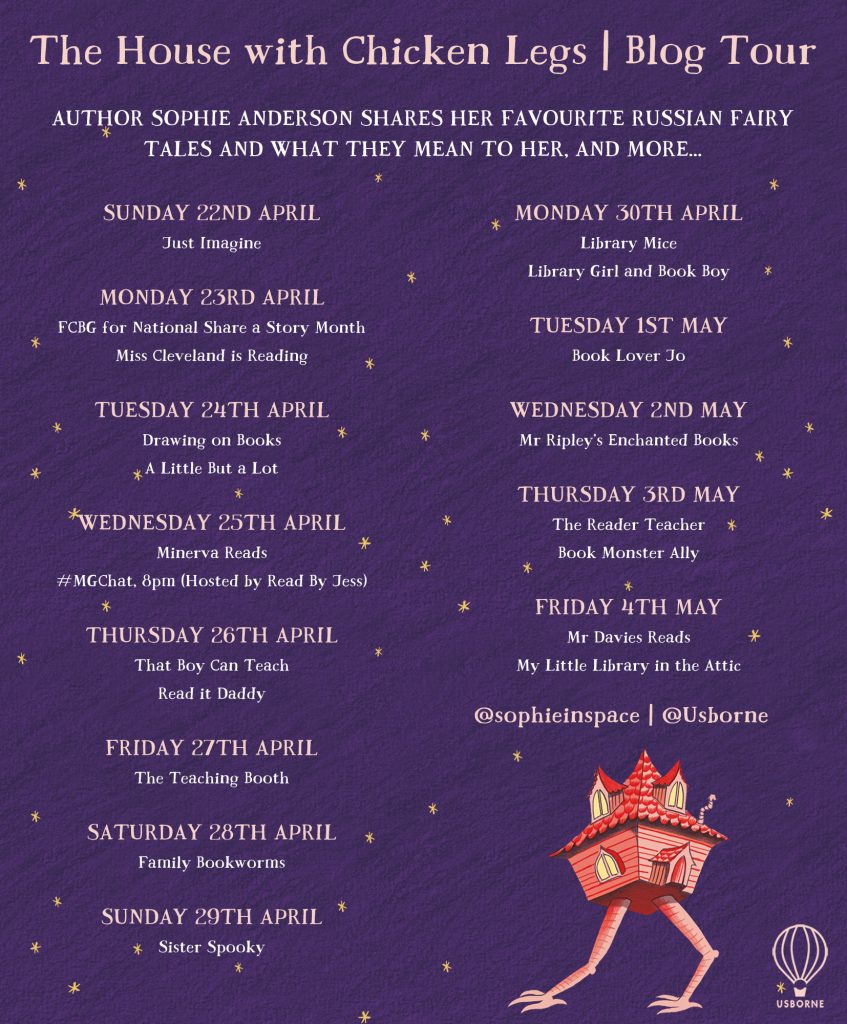Sadko (On the Power of Music)
Sophie Anderson
Number 6 in a series of blog posts to mark the publication of The House with Chicken Legs
‘In Novgorod, in famous Novgorod,
There lived Sadko…’
Sadko is the main character in a Russian medieval bylina (a narrative poem or song). Sadko’s only possession was his maple gusli (a stringed instrument), but he played it so beautifully he was invited to all of Novgorod’s feasts.
One day, Sadko played his gusli on the shores of Lake Ilmen, the water began to swirl, and the Sea Tsar rose from the surface and said,
‘I don’t know what I can reward you with
For my pleasure, for my great pleasure,
For your tender playing.
Perhaps with countless golden treasure?’
The Sea Tsar tells Sadko to make a wager with all the merchants in the city that he can catch a fish with golden fins. Sadko does this, casts a net into the lake, and catches three fish with golden fins. He wins three shops of the finest goods and begins to trade and make great profits.
Sadko builds thirty scarlet ships and spends many years trading along the River Volkhov, Lake Ladoga, the Neva River, and across the blue sea. He earns barrels of gold and silver, but when he decides to return to Novgorod a storm forms in a cloudless sky and his ships stop in the middle of the sea.

Sadko realises it is time to make a tribute to the Sea Tsar and lowers a barrel of silver into the water, but the storm continues. He lowers a barrel of gold next, but still his ships won’t move. Sadko realises the Sea Tsar needs a living tribute and asks his crew to write their names on wooden lots and cast them into the sea.
All the lots float, apart from the one with Sadko’s name on. So, Sadko takes his maple gusli and sits on a plank in the sea while his ships sail away. He falls asleep and wakes on the bottom of the sea, with the Sea Tsar’s palace before him.
The Sea Tsar asks Sadko to play his gusli as tribute, and when the music sounds the Sea Tsar begins to dance. For three days Sadko plays, unable to stop, and the Sea Tsar dances up a storm that, far above, on the surface of the sea, smashes ships and drowns sailors.
Finally, Nikola Mozhaisky (the patron saint of sailors) touches Sadko on the shoulder and tells him to break his gusli strings, so Sadko plays a chord that breaks his strings, the Sea Tsar stops dancing, and the water calms.
To reward him for his playing, the Sea Tsar asks Sadko if he would like to marry a beautiful mermaid. Under the guidance of the saint, Sadko lets hundreds of mermaids pass by, and chooses a maid at the back of the procession. Then Sadko does not sleep with her on their wedding night, as the saint tells him he will stay forever in the blue sea if he does. The next morning, Sadko wakes in his beloved city of Novgorod.
I recognise several themes in the Sadko bylina, such as paying respect to those who help you, and love of home. But to me, the story of Sadko was always about the power of music.
When Sadko had nothing else, his music nourished him; both metaphorically and literally as he was welcomed at feasts. Music made the Sea Tsar rise from Lake Ilmen and reward Sadko with riches.
Music took Sadko to the underwater realm, where he saw a great palace and many beautiful mermaids. And Sadko’s music was so powerful, it made the Sea Tsar dance up a storm.

I have always loved music. Long before we can talk or understand speech, music provides an introduction to how we communicate, how we feel and express emotions, and how we use our imaginations to create and tell stories. Music is a powerful magic, a universal language of the human soul.
And the story of Sadko has inspired more music! Nikolai Rimsky-Korsakov composed a piece of orchestral music based on Sadko in 1867, and later developed this into an opera.
A version of Sadko can be found in Old Peter’s Russian Tales, written by Arthur Ransome, published by Puffin.
Alexei Tolstoy wrote a poem, Sadko, but I have never found an English translation – so if you know of one, I’d love to hear from you!
Do check out the rest of the blog tour (see graphic at the top) – Sophie has written 15 posts about Russian Fairy Tales and what they mean to her. You can read Noah Worm’s review of The House with Chicken Legs here, and Sophie has also answered our questions here.
